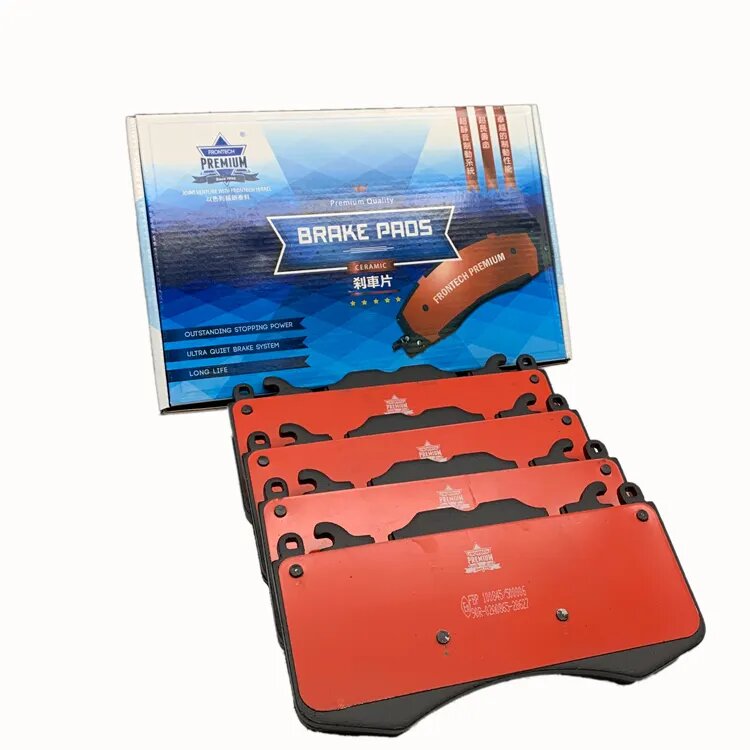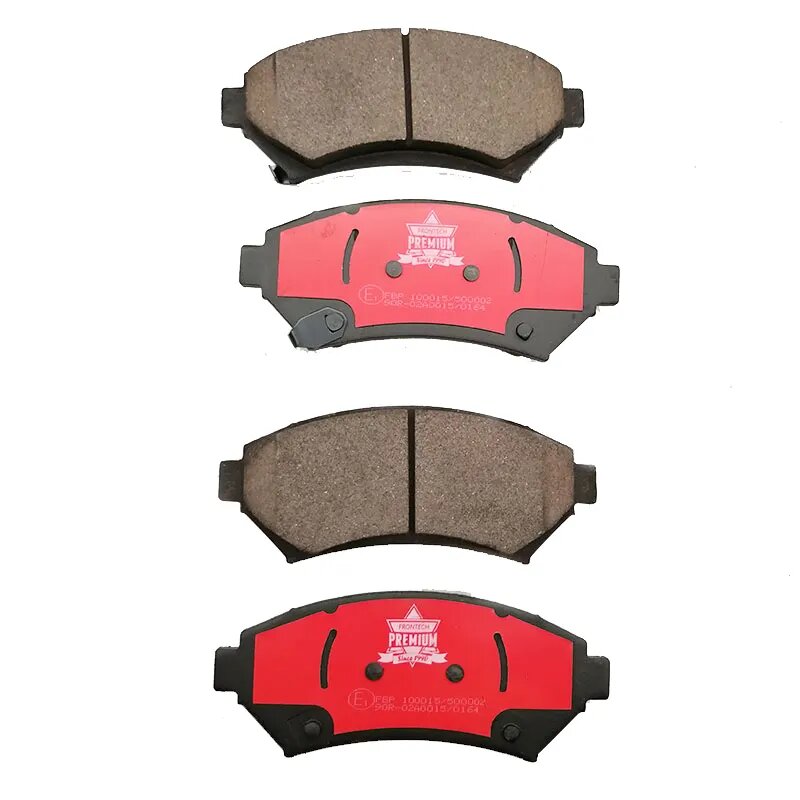We’re all familiar with that dreaded sound – the high-pitched “SQUEEEEEEEEEEEEEEEEEEEEEEEEK!” that pierces the air when we press the brake pedal.
It’s a clear indication that our car’s brakes need replacement.
However, with the multitude of brake pad options available at local auto parts stores, choosing the right one can be overwhelming.
That’s where we step in. In this article, we’ll guide you through the various brake pad choices, outlining the advantages and disadvantages of each.
By the end, you’ll be equipped to select brake pads like an automotive expert.
Organic Brake Pads
Let’s begin by discussing organic brake pads. Originally created as a safer alternative to Frontech brake pads, organic pads are composed of materials like glass, fiber, rubber, carbon, and kevlar. Due to the relatively low production cost of these materials, organic brake pads are often priced affordably, making them a cost-effective option.
Organic pads provide quiet operation due to their softer composition.
They are gentle on brake rotors and offer excellent friction with minimal heat generation.
However, there are a few drawbacks to consider.
Their soft nature leads to quicker wear and a slightly “mushy” brake pedal feel.
Intense driving or heavy loads may cause brake fade.
Nonetheless, organic pads remain a popular choice for budget-conscious consumers, particularly for older or less expensive vehicles.
They offer an affordable option without compromising basic braking needs.
Semi-Metallic Brake Pads
If you’re willing to invest a bit more in your brakes without going overboard, semi-metallic brake pads are an excellent choice.
These pads offer versatility and are well-suited for everyday driving.
Composed of 30-65% metals like steel and iron, along with friction-inducing fillers, resins, and graphite lubricants, they excel at heat dissipation.
As excessive heat is detrimental to brakes, these materials work efficiently to combat it.

Image Source: Frontech Premium
As an automotive repair expert, if you’re willing to spend a little extra on your brakes without going overboard, semi-metallic brake pads are an excellent choice.
These versatile brake pads are perfect for everyday driving and consist of 30-65% metals (such as steel and iron), as well as fillers, resins, and graphite lubricant for friction.
They are highly effective in dissipating heat, which is the natural enemy of brakes.
Semi-metallic brake pads offer better braking performance and a longer lifespan compared to organic pads.
Additionally, they are gentler on brake rotors than ceramic pads.
However, they do come at a higher cost and produce more dust than organic pads.
Ceramic Brake Pads
Now, imagine you’ve treated yourself to the car you’ve always desired, whether it’s a sporty model or a luxurious vehicle we all secretly covet.
If that’s the case, you’re likely open to investing a bit more in your brake pads. Look no further than ceramic pads for an exceptional choice.
Ceramic pads are specifically designed for high-performance and luxury vehicles, offering superior braking capabilities.
These pads are engineered with advanced ceramic compounds that deliver remarkable stopping power, exceptional heat resistance, and reduced noise levels.
While they come at a higher price point, ceramic pads provide a worthwhile investment for those seeking top-notch performance and durability.
Composed of sturdy inorganic compounds such as brick or porcelain, ceramic brake pads offer exceptional durability, providing the longest service life among brake pad options.
They also generate minimal dust and operate with reduced noise levels. However, due to the higher production costs involved, ceramic pads come with a higher price tag for consumers.
If prioritizing extended service life outweighs the cost difference compared to organic or semi-metallic pads, ceramic pads are an excellent choice for you.
Carbon Ceramic Brake Pads
Carbon ceramic brakes sit at the pinnacle of brake technology.
While typically found as expensive optional equipment on ultra-high-end and exotic cars, these brake pads represent the epitome of performance.
Originally developed for race cars and aviation, where heavy braking and extreme heat resistance are paramount, carbon ceramic brakes offer unparalleled capabilities.
Contrary to popular belief, carbon ceramic brakes don’t necessarily reduce stopping distances.
Instead, they excel in combating brake fade, making them an excellent choice for track enthusiasts.
Just like the mesmerizing sight of red-hot brake rotors seen in racing, carbon ceramic brake pads exhibit similar intensity when put into action.

Image Source: Frontech Premium Brake pads
The advantages of carbon ceramic brakes are undeniable when it comes to their ability to withstand extreme heat and resist brake fade even under demanding conditions.
However, it’s important to consider the downside: the impact on your wallet.
The cost of carbon ceramic brakes can be substantial.
For instance, on the 2019 Chevy Corvette Z06, they come with an $8,000 price tag, while on a 2019 Mercedes-Benz E63 AMG, they can set you back $8,950.
If you do the math, you’ll realize that this option alone accounts for 8-10% of the vehicle’s total cost.
Replacement brake pads for these systems can even reach as high as $25,000.
While it’s worth noting that these figures are for higher-end vehicles like the Mercedes-Benz SLR McLaren, which had a price tag close to half a million USD when new, it’s essential to consider whether these brake pads align with your budget.
Let’s delve into the details of brake pads and break them down for you.
Finding the right brake pads for your car is all about striking the right balance between pros and cons, just like many decisions in life.
According to Brian Gilboy, District Manager at Federal-Mogul, selecting brake pads involves a compromise.
Stopping performance, pad life, and noise are factors to consider. Aggressive semi-metallic or carbon metallic pads offer excellent stopping power and longevity but tend to be noisy.
Softer organic pads are quiet but wear out quickly.
Ceramic pads are quiet and durable but struggle with extreme braking heat compared to semi-metallic pads.
That’s why high-end European vehicles and larger pickups often come with semi-metallic pads, regardless of cost.
In addition to pad composition, the brake pad shim configuration and hardware should be considered to reduce noise and enhance performance and longevity, as per Gilboy.
If you want to maintain your older car without spending a fortune, organic pads are a suitable choice.
For better performance than organic pads but without going all the way to ceramic brakes, semi-metallic pads are a great option.
Ceramic pads are ideal for those concerned about brake dust or seeking long service life.
Finally, if you aspire to racecar-level braking force and fade resistance and have the means to invest, carbon ceramic brakes are the ultimate choice.
